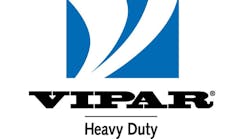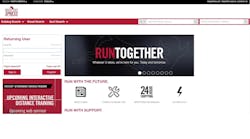EDGAR Papke believes that company leaders talk a good game of culture. But based on his experience, they are not well-equipped to intensely lead culture.
He doesn't think it's necessarily the fault of the CEO. It's simply that most leaders have not been given a framework.
In “The Culture Key: Innovation, Accountability, and the Human Art of Business,” Papke — an award-winning speaker and facilitator who was named 2006 International Speaker of the Year by Vistage International, UK, a leading membership organization for chief executives worldwide — said business is a human art.
“Business does not create human beings — we create business,” he said. “No matter where you look through the cycle and process of business, the common thread is, we're human beings. Business is, in fact, a human art. And that's what makes culture so incredibly powerful and makes alignment so incredibly powerful as leaders.”
Papke said aligned cultures determine:
- What.
“What are we intending to do? What allows us to succeed? What are we in business to do? The #1 answer is, to make money. That's true … in the end. But the reason we're in business is to win. The framework of capital society from the global perspective — capitalism, free market-enterprise — is all built on the simple foundation of human beings wanting to compete. What we're truly in business to do is to bring something to the marketplace that allows you to win. In our capitalistic society, the real true scorecard is capitalism through profitability. The more we do that — the more we get to invest that money and build more — the more we can innovate and move forward.”
- Why.
“Why is the customer spending money with us and not our competitors? There needs to be a line around that so every single person in your organization knows. Whether you're a multi-national corporation or not, everybody needs to be in tune with, ‘What do we need to do to win?’ You know what the #1 fallacy is? It's, ‘The sun rises.’ It doesn't. The earth turns. The #2 fallacy is, ‘Don't take this personal.’ The third one is, ‘I can be nonjudgmental.’ We're all judgmental. That's how we make decisions. What the why is all about is the emotional driver. The emotional driver of the customer shows up in how you deliver your product or service. The why has to be there. It has to be something emotional.”
- How.
“For most of us, the how begins with, ‘What are the systems and processes we engage in to create and deliver the product to the marketplace to our customer?’ It's how people work together — the patterns and behavior and how it is we come together and work together. How decisions are made, how problems get solved. Why do things happen the way they do? Aligned cultures clearly articulate the how.”
What they want
He said customers want three things:
- Attention.
- Competence.
- Concern.
“We really understand whether or not they care about us as it relates directly to how honest they are with us. We all want to be liked and loved and the sense that you accept me for who I am. In the end, that means you care for me. The essence of caring is to be authentic, genuine, honest, and truthful with me. That is a very, very powerful force.”
He said the “competitive intention” is how you compete, your market differentiator, your advantage, your customer value proposition, and your mission and purpose.
“Do we have a really observable way to see how behaviors internally align externally?” he said. “The more the internal vehicle aligns to customers' experiences externally, the more powerful and trusted you are and the greater the brand is. If it's dysfunctional, I'm going to feel it sooner or later as a customer. So culture has a direct impact on how well you deliver your intentions in the marketplace.
“Most cultures originate from the leader. When you see the nuances of your behavior as a leader — the characteristics of your personality showing up in group dynamics around you — there is something so remarkably powerful about this. The example is Steve Jobs. The customer felt connected to Steve Jobs. It was absolutely amazing, just as we felt connected to Walt Disney or Bill Gates. We somehow felt an identity to the leader. And we feel the identity of the culture, and we understand how alignment impacts and affects us.”
Papke said that by the time the 1990s rolled around, it wasn't enough to provide quality and superiority. There needed to be customer intimacy — a relationship with the product.
“Products and brands can actually find their ways to the marketplace in extraordinary ways — by saying that we care, by making customers happy,” he said. “Because after all, in the end, it's all emotional. The principal of competitive intention states that in order to compete and win the marketplace, one must deliver a product or service to the customer that is emotionally satisfying and results in a trusting relationship of mutual benefit and respect.
“People now want community. Harley Davidson is a great example. They park and socialize. Harley is great at this stuff. They want a high-level motorcycle, but what they come for is community. I'm selling you something that makes you feel ‘in.’”
There also needs to be preeminence.
“Your laptop's broken so you go to an Apple store,” he said. “The first question is, ‘Can I help you?’ And the second question is, ‘Do you have an appointment?’ What they're selling is preeminence. They're that good. They can almost be arrogant. Preeminence is a constant pursuit of superiority, constant innovation.”
Culture is the things a company does to succeed, he said.
A lot of us have trouble articulating what our business looks like. Culture is something they can feel. Culture defines what it looks like. Even if we're good at something, that doesn't mean we're a good match for the culture. I think Willie Nelson's tour-bus driver is probably good at what he does. But you probably don't want him driving your kid's school bus.”
Culture must involve:
- Role modeling.
“What's acceptable and unacceptable behavior. You say the meeting starts at 8. You start showing up at 8:10. Then one day you actually show at 8, and not everybody's there. And you're surprised?”
- Reinforcement.
“I have found it occurs two ways: active and passive. If somebody's doing something well, it's your opportunity to recognize it and actively reinforce the behavior you're looking for. On the other hand, if somebody's acting the way that you don't want in your culture, active reinforcement is holding them accountable, confronting them. By definition, it's stepping into the truth. Unfortunately, my observation is that most reinforcement is passive. People do things in certain way. Leaders sit back, observe, watch, and by the time they decide to do anything, it's already embedded in the culture. Anytime you're not stepping actively into reinforcement, you're doing it passively.”
- Reputation.
“It extends all the way up that customer. What you're doing internally in the culture shows up externally to the customer. That's so, so powerful.”
Most leaders learn by trial and error, but these are characteristics you can observe and measure, he said:
- Power and influence
“They get it through service to others — by helping other people to succeed.”
- Planning and goal-setting
“In some cultures, it's bottom up — getting everybody involved. In others, it's top down.”
- Decision-making
“I know who to talk to about what to get what done.”
- Hiring/firing
“In some cultures, we group-hire. In other cultures, experts hire experts.”
- Conflict management
“In some cultures, going toe-to-toe with a leader is not a good idea. In other cultures, it's a requirement.”








